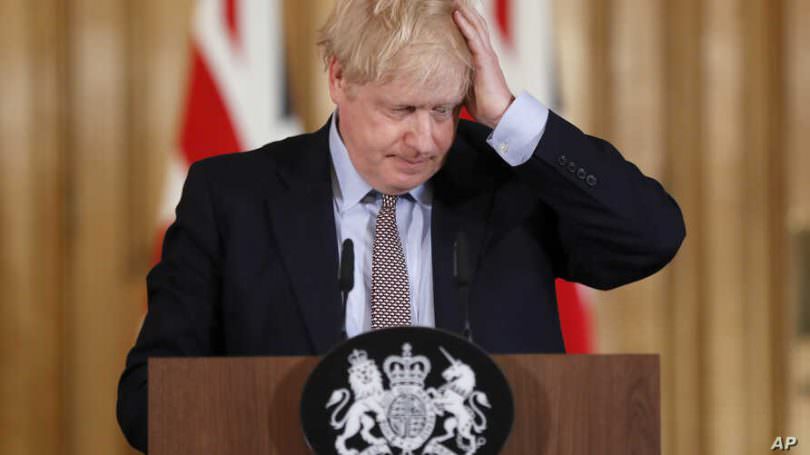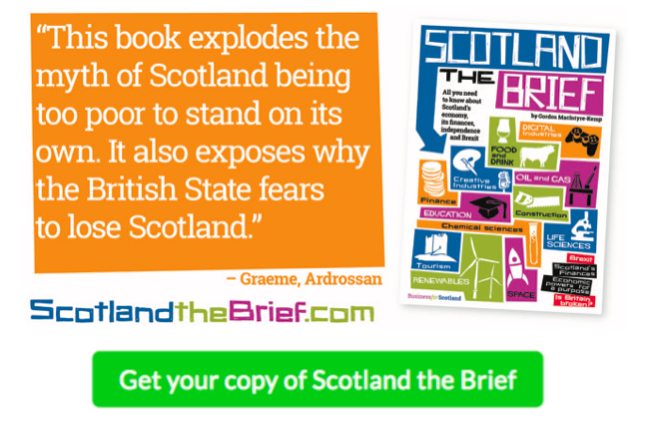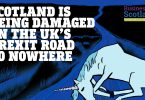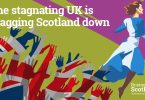The UK Prime Minister came to Scotland this week in an attempt to protect the rapidly shrinking support for the Union. One of his key points was that being a part of the larger UK will have aided Scotland in dealing with the crisis.
Since March, we have witnessed the rapid development of one of the worst global health crises in decades. The UK has suffered one of the highest death tolls worldwide, with 45,300 COVID deaths being registered as of 20th July 2020. This has caused widespread outrage and concern, and on several occasions, polls have shown that the UK Government has damaged the trust of the general public.
Johnson, however, is bound to claim that the UK’s response to COVID-19 helped Scotland and that as an independent nation we would not have had access to that support. The best way we can examine that claim is to evaluate the performances of our smaller, independent Northern European neighbours.
COVID-19 death toll per head in other benchmark countries
According to Our World in Data, many of the independent Nordic countries, with a population of approximately 5.5 million, such as Norway, Finland and Denmark, have experienced far lower COVID deaths per capita throughout the coronavirus pandemic than Scotland has as part of the UK.
For example:
- Norway (population of 5,421,242) has experienced a total of 255 deaths as of 20th July 2020. This is the equivalent of 4.70 deaths per 100,000 people.
- Finland (population of 5,540,718) has experienced a total of 328 deaths as of 20th July 2020. This is the equivalent of 5.92 per 100,000 people.
- Denmark (population of 5,792,203) has experienced a total of 611 deaths as of 20th July. This is the equivalent of 10.55 per 100,000 people.
If we compare this to Scotland, we are presented with a dramatically different picture. During the daily briefings, the Scottish Government has been offering two different figures representing the COVID-19 death toll in Scotland. The first figure of 2,491 (recorded 20th July 2020) represents those who have died of coronavirus after testing positive. The higher figure of 4,187 (recorded 20th July 2020) represents those who have died with coronavirus being mentioned on their death certificate.
We can use the first figure of 2,491, which corresponds with the UK-wide figure of 45,300, to offer a comparison of the death toll per capita between Scotland and the UK as a whole. In Scotland, this is the equivalent of 45.67 deaths per 100,000 people. Whereas, the UK figure is 66.7 deaths per 100,000 people. Throughout the coronavirus pandemic, Scotland’s death rate has been lower than the UK’s. For example, at the beginning of June, whilst Scotland’s excess deaths were still high, the figures were significantly lower than the excess deaths in England and the UK, overall.
The results for Scotland, as part of the UK, are higher than the figures recorded in the smaller independent Nordic countries. These results suggest that independent countries, with a population similarly sized to Scotland’s, have outperformed the UK and coped better under the current circumstances. What do they have that Scotland does not? They do not have an open land border with England, whose response has been mismanaged by the UK Government. They also have the powers to act completely with the best interests of their citizens, rather than largely having to follow the UK’s lead, where wellbeing is of lower importance.
There is no reason to suggest that an independent Scotland would not have been able to perform better during this pandemic than it has as part of the UK.
A comparison of responses to COVID-19
- It is important to note that Norway, Denmark and Finland kept their borders closed to their neighbouring country, Sweden. Sweden has experienced a notably higher death toll per capita, 55.64 per 100,000 people (recorded 20th July 2020), compared to the other Nordic countries and therefore faced a degree of isolation from the other Nordic nations during this time. In the UK, there has been a number of debates surrounding travel between the four nations. However, while the R level continues to vary in different areas across the UK, it is important to minimise travel and impose restrictions if necessary. Such measures have helped to protect the citizens of Norway, Finland and Denmark.
- A study by Steffen Juranek and Floris T. Zoutman offers a comparison of the response Norway and Denmark adopted and the approach that was implemented in Sweden. Sweden adopted a more lenient approach, choosing not to close schools or workplaces. The study found that if Norway and Denmark had followed a similar approach to Sweden at the peak of the virus, both countries would have had more than three times as many COVID-19 patients in hospitals. This comparison again demonstrates two small independent countries, with approximately 5.5 million people, outperforming those with a greater population.
- Even our neighbouring country Ireland, with a population of nearly 5 million, has outperformed Scotland as part of the UK. Such smaller, independent countries were able to implement strict measures that fulfilled the health requirements of their population more efficiently and with greater ease.
Does the UK help pay for Scotland response?
The PM will claim that the strength of the UK Treasury saved Scottish businesses with the furlough scheme. This is true. However, this scheme also bailed out English businesses. The UK is now in £1.95 trillion of debt, a number that actually exceeds the size of the UK economy. Since the UK is now in such huge debt, any money coming to Scotland from the Treasury is not a gift, it is a loan. Scotland will have to pay back a population percentage share of the UK’s borrowing. A population percentage share regardless of where the borrowing is spent. This means that Scotland will actually be subsidising the UK if it does not receive an equal population share of the furlough money.
Last week, Kate Forbes, the Scottish Finance Minister, was proved right when she claimed that Scotland was being short changed by the furlough scheme.
Conclusions
As many countries begin to ease restrictions and move out of lockdown, the effectiveness of the different approaches used to suppress COVID-19 becomes clearer. The low death tolls per capita amongst the small Nordic countries, such as Norway and Denmark, suggests the effectiveness of their efficient and strict measures.
These Nordic nations, Norway, Denmark and Finland, all chose to keep their borders closed to Sweden, an option that has been met with derision when it has been suggested in Scotland, regarding borders with the rest of the UK.
It is clear that being a part of the larger UK has not helped Scotland respond to COVID-19. Scotland, a similarly sized country to Norway, Denmark and Ireland, would have had the option to adopt more efficient measures than those utilised by the UK and, ultimately, may have experienced a comparably lower death toll per capita. That being the case, if Scotland had needed to borrow to pay for the furlough scheme, just as the UK did, it would have borrowed what it needed. However, all of that borrowing would have been spent in Scotland and we may have required less if the pandemic had been better handled and the economy was able to re-open sooner.









We could really do with an examination of the financial support given to scotland and scotlands businesses compared to likes of nordic countries and esp Ireland and poss Germany.
I bet individuals and businesses have been supported much more in these countries.
We need to figure Scotlands share of uk schemes like furlough and self employed scheme and also the money Scotgov have received then compare and contrast.
It is likely to be a main argument in election and indyref ..so we can counter sheer might pish of Tories.
That’s next on my research teams agenda.
When this is all over, and Scotland’s response is considered, there is one issue that I hope won’t be overlooked, which hasn’t been addressed here.
Scotland didn’t have much latitude on many important decisions, such as when to start lockdown, because it did not have the fiscal powers to keep people from losing their jobs. That is a statement of fact. Within that contraint, I believe the Scottish Government steered as good a course as it could in the circumstances.
It was right to work in a four-nations context, co-operating both with governments and experts. And the original plan for the four nations was a genuinely good one that almost worked.
If it had, the UK could have had an outcome similar to Germany’s. Germany essentially kept the virus in the containment phase right through. In March, there were signs that in the UK, and particularly in Scotland, contact tracing was limiting the spread.
So what went wrong? Why didn’t the UK follow Germany’s path, because I believe it did have the wherewithall? The reason was the disastrous messaging. The PM going on the TV with his herd immunity nonsense and ‘taking it on the chin’ comments, at around the same time as hospitals in Italy were swamped, was the worst possible thing to do.
People, unsurprisingly, panicked. They took matters into their own hands, took kids out of school, and stayed off work. I remember the shock during the week ending Friday 13th March, when people realised it was falling apart, and that the introduction of whole household isolation could bring down the NHS. At that point lockdown became inevitable, and containment unsustainable.
Unfortunately, what the public was hearing, was not what it needed to hear. Not well-founded, transparent and clear messaging, encouraging us to follow the best examples around the world, but the incompetence and wilfully unconcerned approach of the UK government. At that point, the Scottish Government did not have the attention of the media that it has now earned, so was largely unheard.
The dreadful, untrustworthy messaging, and not the exact date of lockdown – which was happening by itself anyway – was what cost tens of thousands of lives.
There is little doubt in my mind, that had Scotland been independent, our government would have had the ear of the people from the start, and done a similarly good job of leadership as the governments of Germany and the more successful Nordic nations, resulting in a better outcome than we currently have. Fortunately, should there be another wave or another virus, Scotland now knows who to listen to in a crisis. All we need now is independence.
With the initial approach agreed at the start of the pandemic to take a coordinated 4-Nations approach, I do wonder what obligations Scotland had to adhere to Westminster advice, and guidance from SAGE, PHE and DHSC, which would have constrained the Scottish Government and therefore prevented them from taking actions earlier than the agreed coordinated measures? Would we have been in a better place right now?
I agree with Ian that perhaps Facemasks should have been enforced earlier, although the primary guidance always was maintain 2 metres distance and always practice good hygiene (although granted, very difficult to do on public transport and enclosed spaces). I also think we should have been flooded with Testing, Testing, Testing, as the W.H.O recommended.
What could we have done differently if we had the powers to do so?
Entirely agree that an independent Scotland would have dealt with Covid much better than having restrictions due to being part of the UK. Independent financial borrowing to support the economy and closing the border possibly being the two key issues that it lacked control of. The Scottish Government did do well on several areas, with the track and trace system being notable for being well ahead of England’s. However weaknesses of the Scottsh Government shouldn’t be papered over and it should be recognised that it was slow to take actions that it was able to much sooner than it did. Germany made the wearing of face masks compulsory at the end of April when using public transport and in shops. Scotland didn’t until do this until June 22 for public transport and July 10th for shops. With an extremely high level of public support and adherence to this requirement in Scotland since it was made compulsory, it shows that people here will respond well when given both positive (preventive effects of masks) and negative (fines) reasons to do so. Maybe the Scottish Government should have more trust in the public and be more progressive in pushing actions well ahead of the UK when evidence elsewhere suggests that it should and it has the ability to do so.